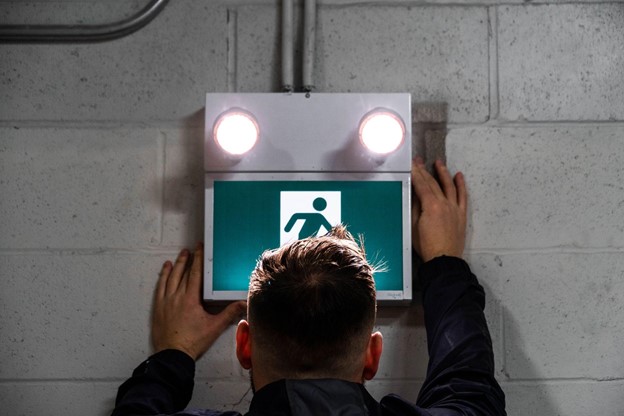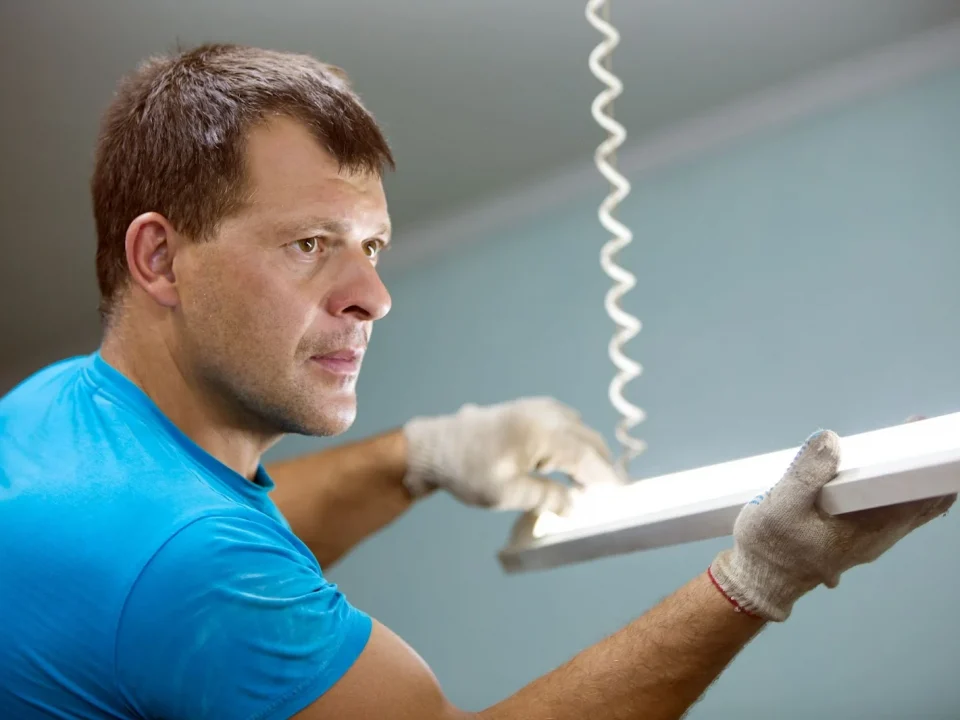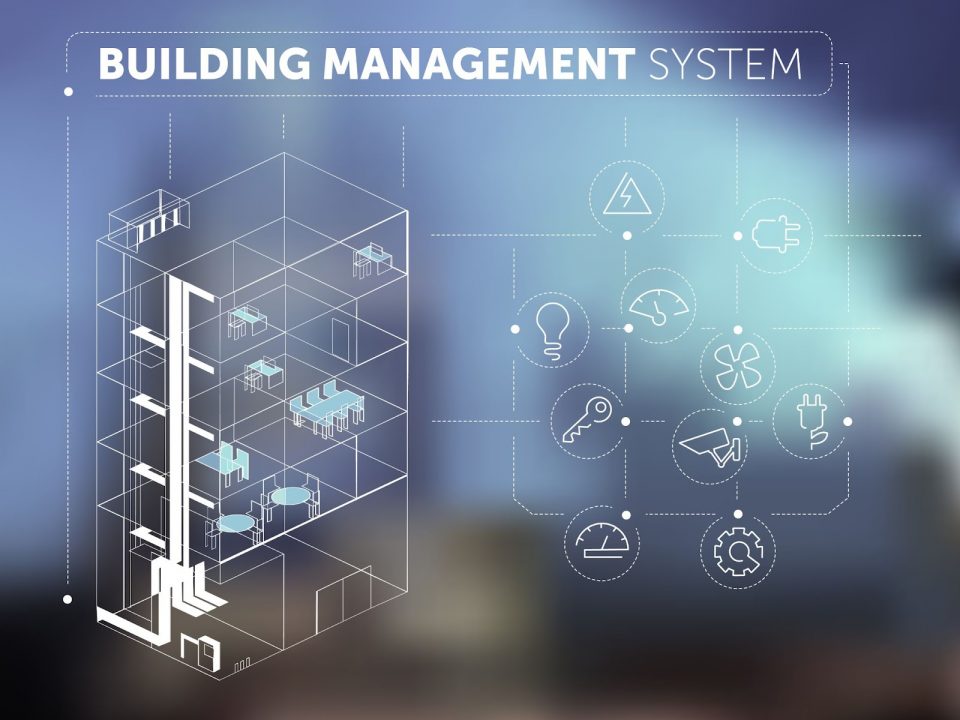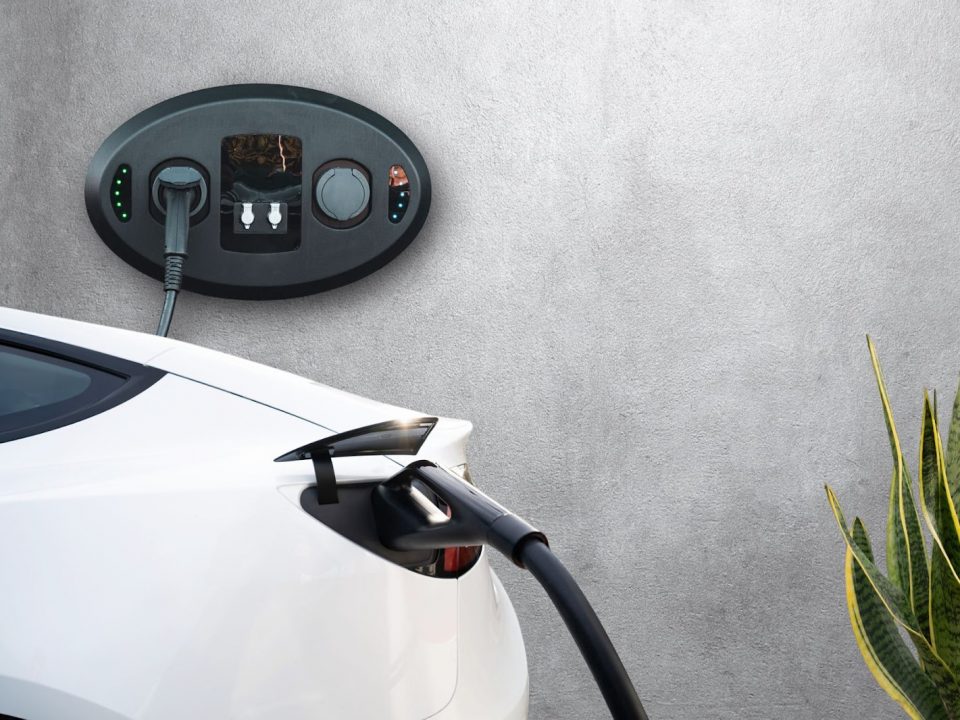Are There Regulations for Emergency Lighting in Commercial Establishments?


Emergency lighting systems are an integral aspect of ensuring the safety of people in a commercial building. However, unless there is a power outage or a blackout somewhere in a commercial establishment, emergency lighting maintenance is often overlooked.. Read on below to learn more about emergency lights, maintenance importance and the regulations involving them.
What Is an Emergency Light System?
Emergency lights are light sources designed specifically to serve as backup lights in case of emergencies such as a power outage. Emergency lights are typically powered by backup batteries that are rechargeable. If you own or manage a commercial building, it will have to have an Emergency Light System as part of building regulations.
What is the use of emergency lights?
An emergency light system is essential for safety, ensuring the safe evacuation of people within a building when the main lighting system fails or is not in use.
What are the types of emergency lighting?
In general, emergency lighting can be categorised into two main types: emergency escape and standby lighting.
Emergency escape lighting
The purpose of this type of lighting is to specifically allow people to exit the building safely and securely. Emergency escape lighting is further subdivided into three categories:
· Escape route lighting
This type of emergency escape lighting involves installing emergency lights on all possible escape routes, which can include hallways, stairways and exits. By keeping the escape routes adequately lit, escape route lighting helps facilitate safe evacuation in commercial premises.
Besides making the escape routes more navigable, escape route lighting also aids people in locating crucial equipment such as fire extinguishers and key boxes that are used for storing emergency keys to exit doors.
· Open area lighting
Open area lighting helps people identify various escape routes they can follow in case of an emergency. This type of emergency escape lighting is also called anti-panic lighting. It aims to prevent panic among large gatherings or public crowds during a power failure. The open area lighting is handy in large commercial premises such as shopping centres and galleries.
· High-risk task area lighting
As its name suggests, this type of lighting is useful in workplaces or areas where there are dangerous processes or tasks involved. The high-risk task area lighting is used in instances such as when an operator is using or handling machinery, sharp objects and hazardous substances. The lighting system is necessary to aid workers in activating shut-down procedures and then escaping the premises.
Standby lighting
Standby lighting, compared to emergency escape lighting, is a system that is used to enable workers to go on with their routine tasks despite the power failure. Another significant difference between standby lighting and emergency escape lighting is that the former is not a legal requirement in the UK.
UK Regulations for Emergency Lighting
So is emergency lighting a legal requirement in the UK? Yes, emergency lights are legally required to be installed in commercial buildings. According to the Regulatory Reform (Fire Safety) Order of 2005, emergency routes and exits must be provided with adequate illumination through the use of emergency lights.
Consultation
It is essential for businesses to consult with experts on emergency lighting regulations to ensure that they’re in proper compliance with the required standards. Otherwise, they might face penalties and fines should they fail to comply properly.
Proper design and risk assessment should ensure businesses have correctly identified where to best place emergency lights within their buildings.
Maintained vs. Non-Maintained Emergency Lighting
Emergency lights can be maintained or non-maintained, depending on the type of commercial building where the system will be installed. For instance, clubs and theatres generally use maintained emergency lights.
Maintained lights operate at all times. This is their main difference with non-maintained lights, which only operate and serve as a backup for when the main lighting fails.
Duration
The British Standard Code suggests the minimum duration for an emergency escape light system to be around 1 hour if immediate evacuation is possible. Otherwise, the minimum duration is raised to 3 hours.
Lux
The illuminance or lux level for escape routes is set at a minimum of 1 lux. Open areas must be illuminated at 0.5 lux. And for high-risk task areas, the general recommendation is that the emergency lights must provide illumination at a minimum of 15 lux.
Additional benefits of Emergency Lighting Systems
Commercial establishments have to install emergency lights to comply with the regulations. But aside from being in compliance and avoiding possible fines, emergency lights are beneficial for businesses for other reasons. Here are some of them:
· Enhances safety
Having emergency lights in place enhances your business’ safety measures in case of emergencies. It helps direct people where they need to go so that they can evacuate in an orderly fashion. This minimises panic and helps them easily identify escape routes and equipment that can help them in emergencies such as a fire extinguisher.
Emergency lights assist not only the people going out of a building but also those who need to go into the building, such as first responders. By providing adequate illumination, emergency lights aid first responders in accomplishing their duties, particularly if they are unfamiliar with the layout of the building.
· Utilises LED technology
Most building owners opt for emergency luminaires with LED bulbs. LED emergency lighting serves as a more environmentally friendly solution for businesses. In addition to this, LED lighting is more cost-effective than traditional incandescent lighting in the long run because the former has a higher life expectancy. LED lights also consume less energy. All of these advantages enable a business to save on lifecycle costs.
· Reduces downtime
For businesses, another advantage of emergency lights is that they provide a way for workers to go on with their daily tasks while waiting for the main power to come back.
Emergency Light Testing
One of the biggest issues facing commercial property owners is ensuring that their emergency lighting systems are properly maintained and in good working order. Without proper maintenance and testing, emergency lighting could fail at the critical point of emergency and fail to ensure users of your business property can be evacuated safely. In particular, if your business is housed within an older commercial property, adequate maintenance and testing is essential and upgrading may be required.
Depending on the specific requirements for your commercial premises, you may be obligated to plan and execute annual checks and testing. Should you fail to implement such testing, not only could you be in breach of your obligations, you could be putting your business users and staff at risk. Emergency light testing is essential in identifying whether your lighting system meets the necessary standards.At Edmont M&E, we offer emergency lighting testing services to ensure your emergency lights work properly. Our expert team offer planned and reactive maintenance services for emergency lighting and general mechanical and electrical testing. We can also offer advice, design and installation of system upgrades to ensure your commercial premises complies with the required standards. Contact our team today to learn more.


